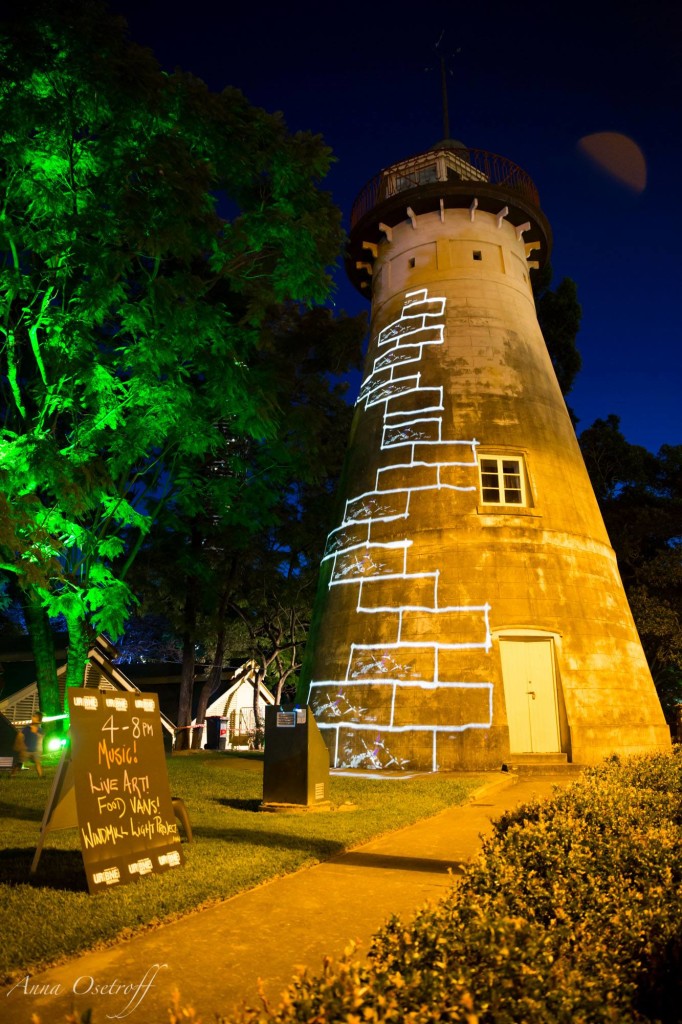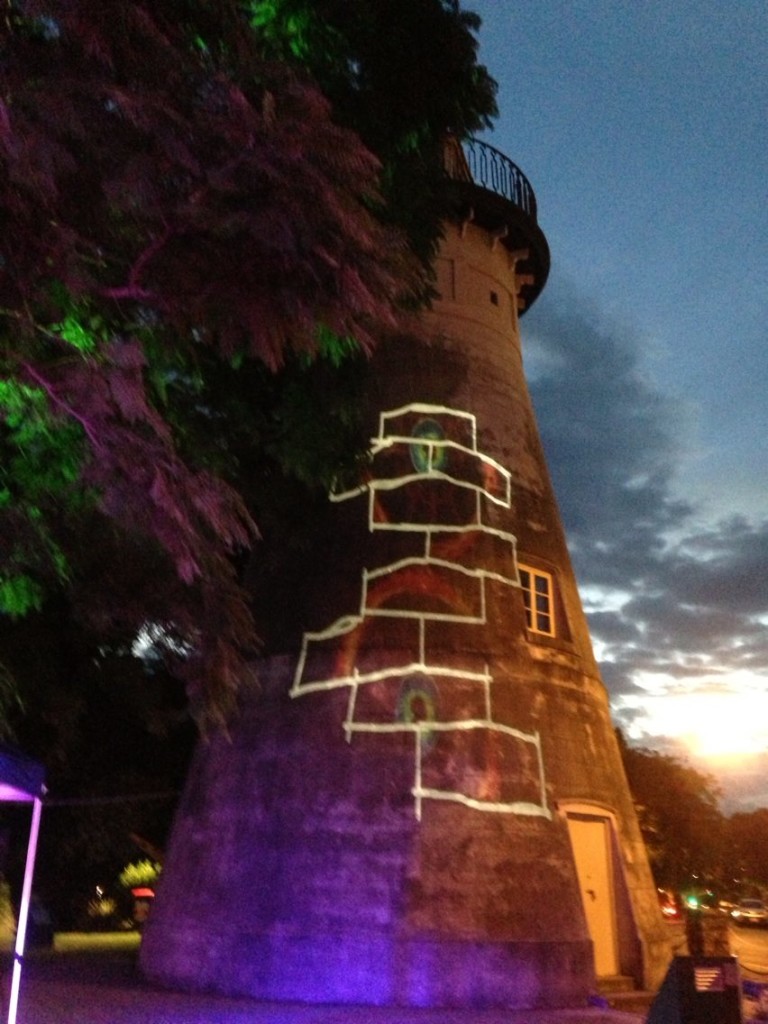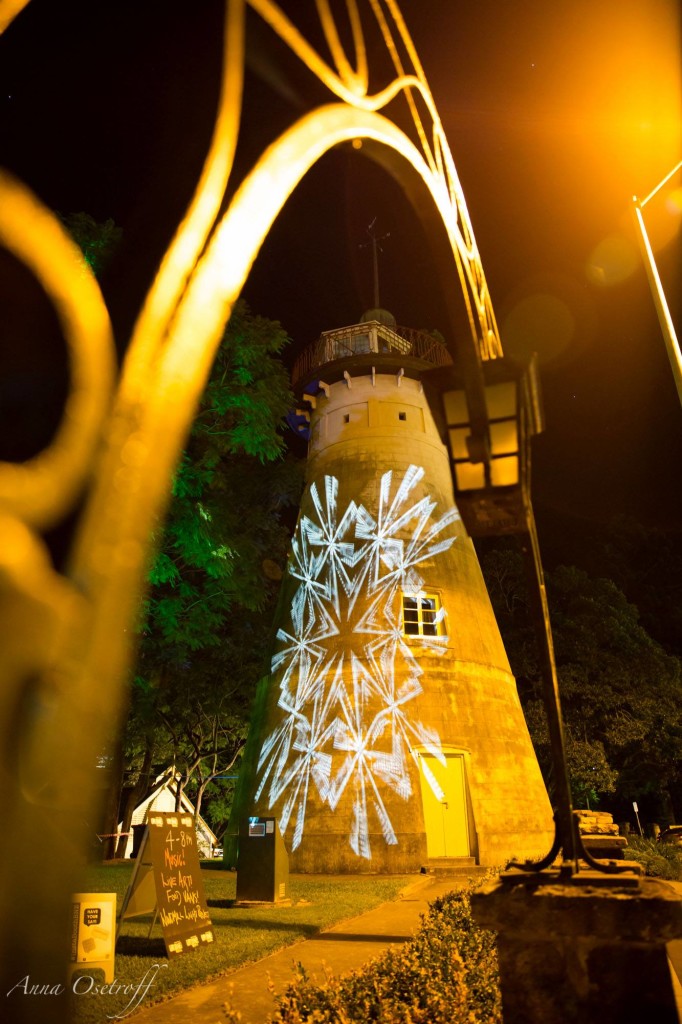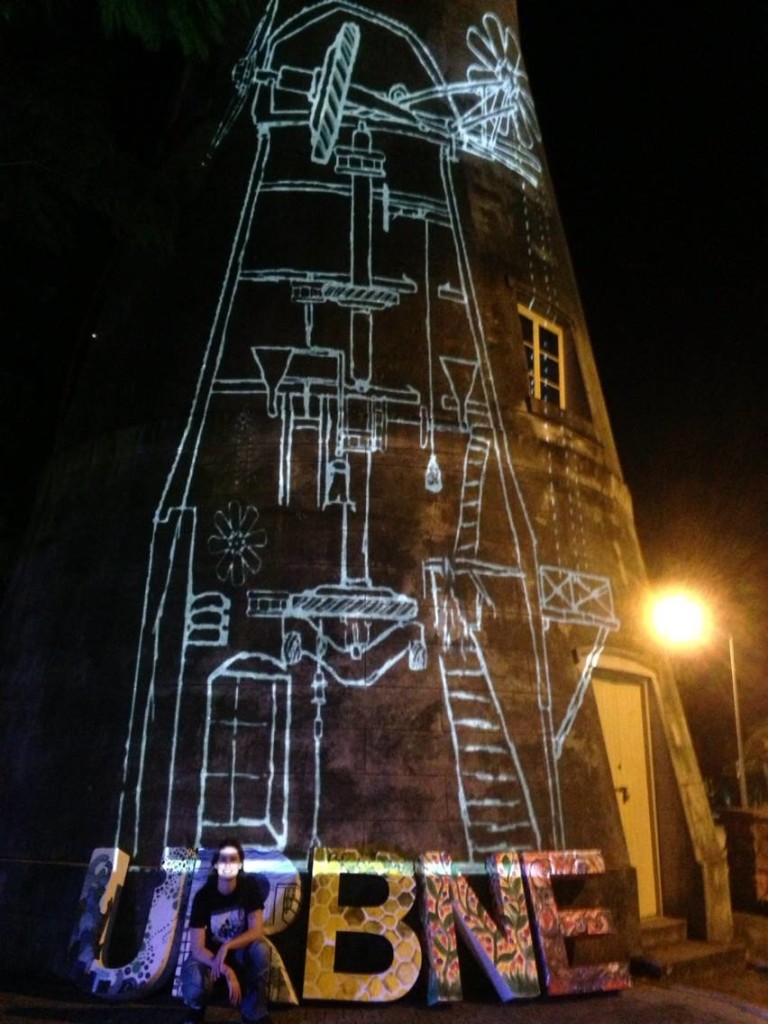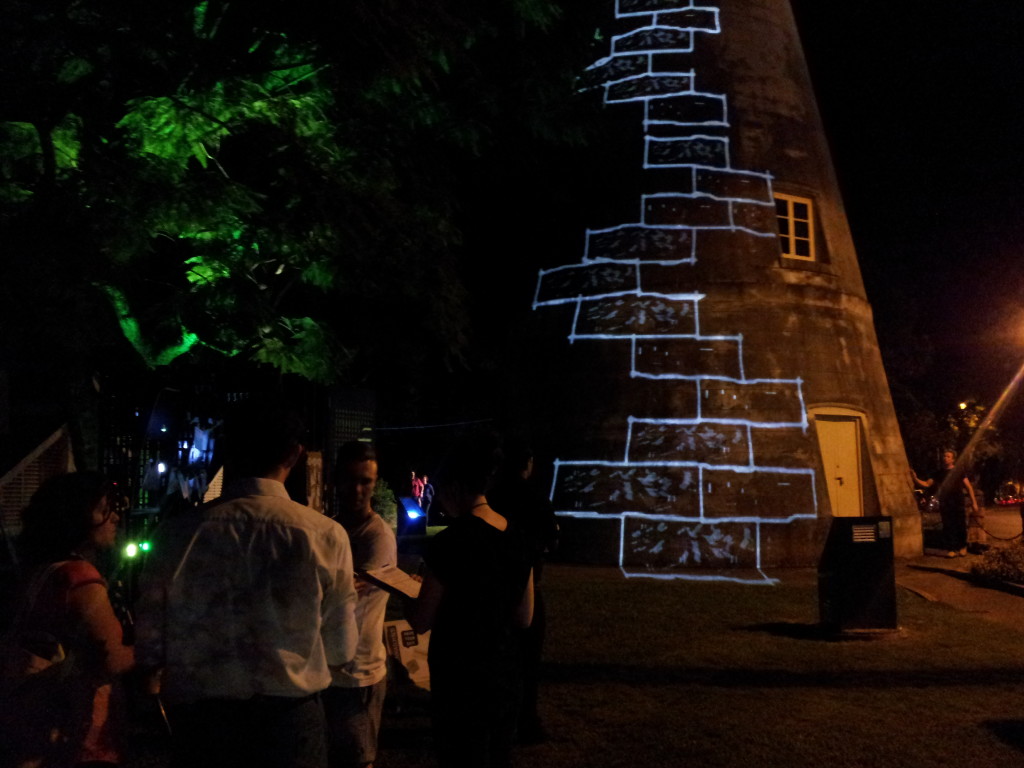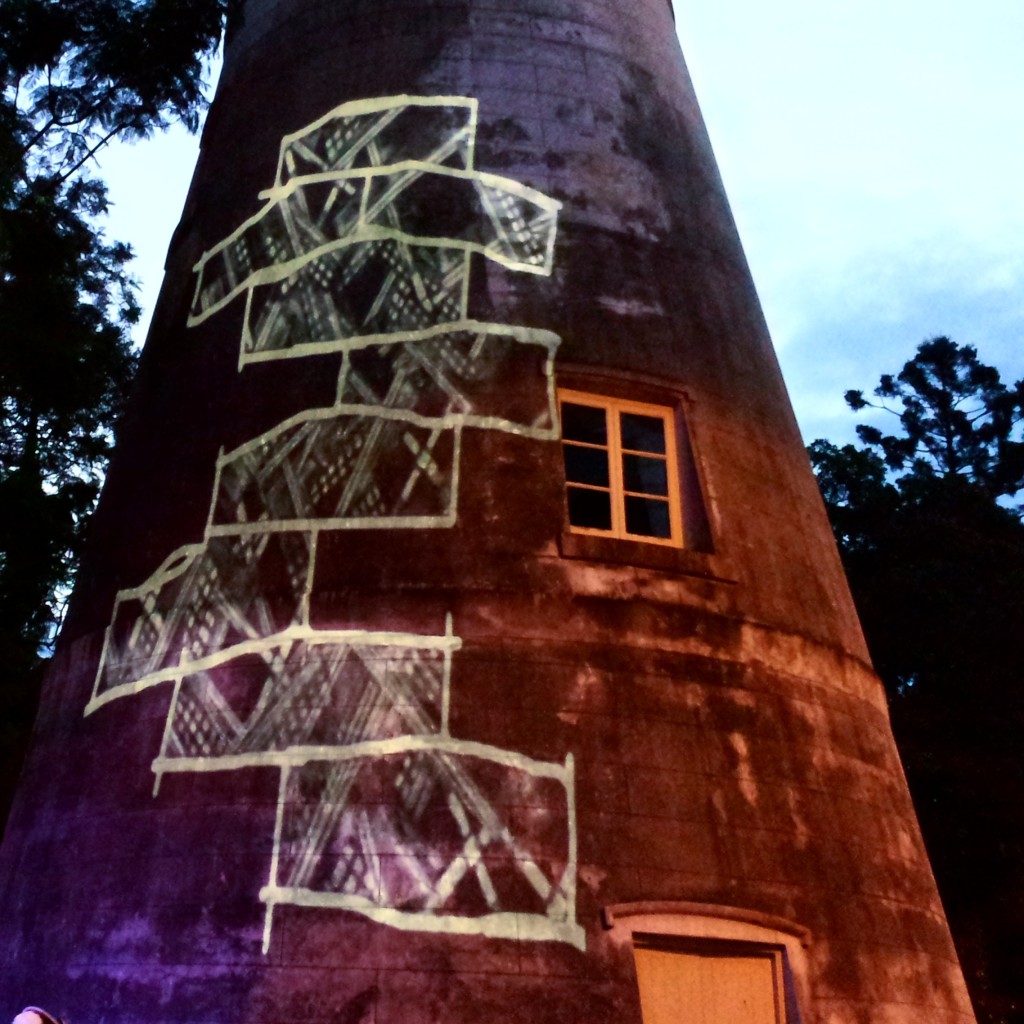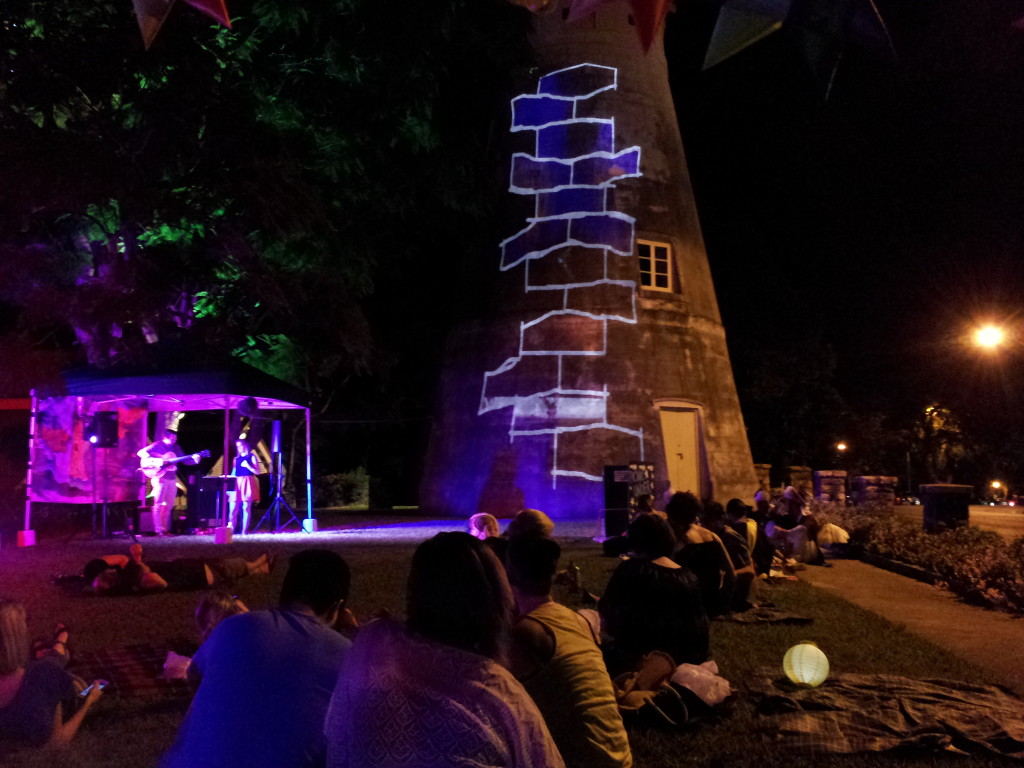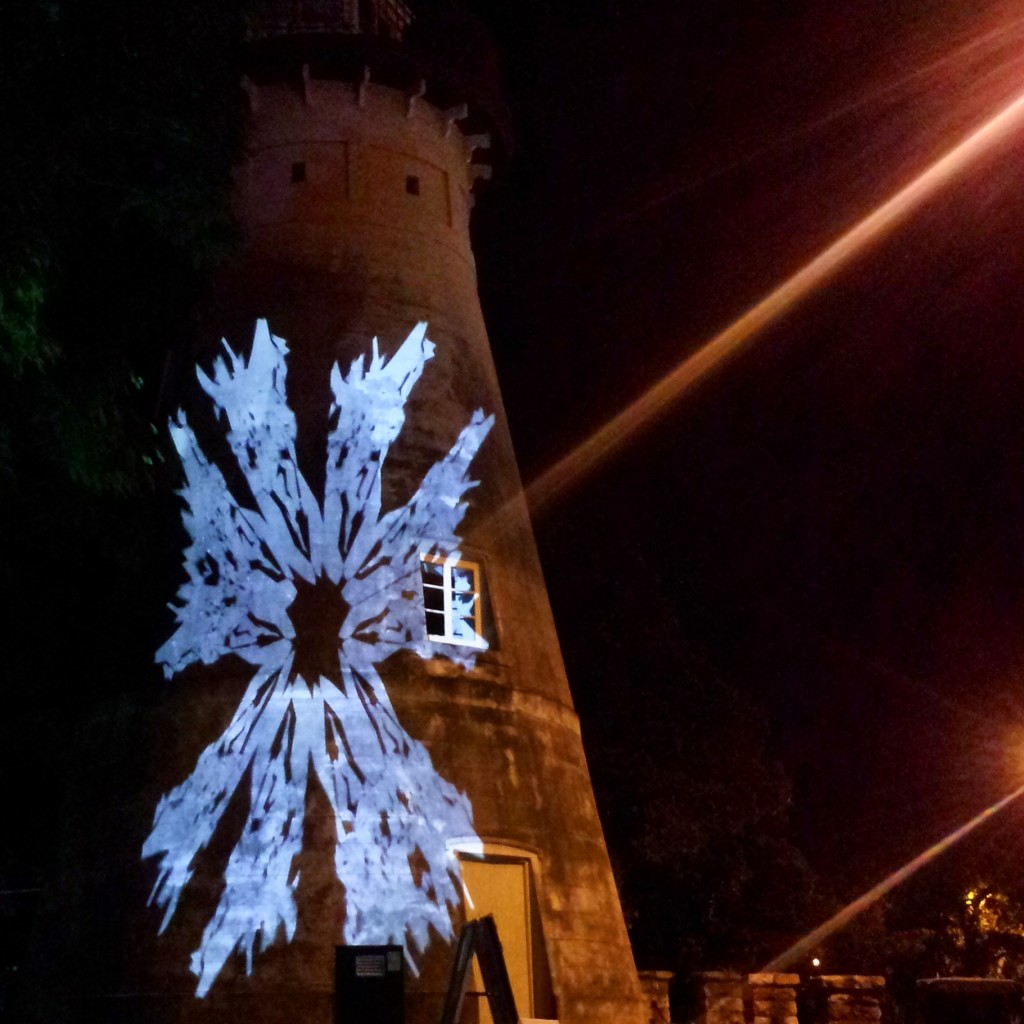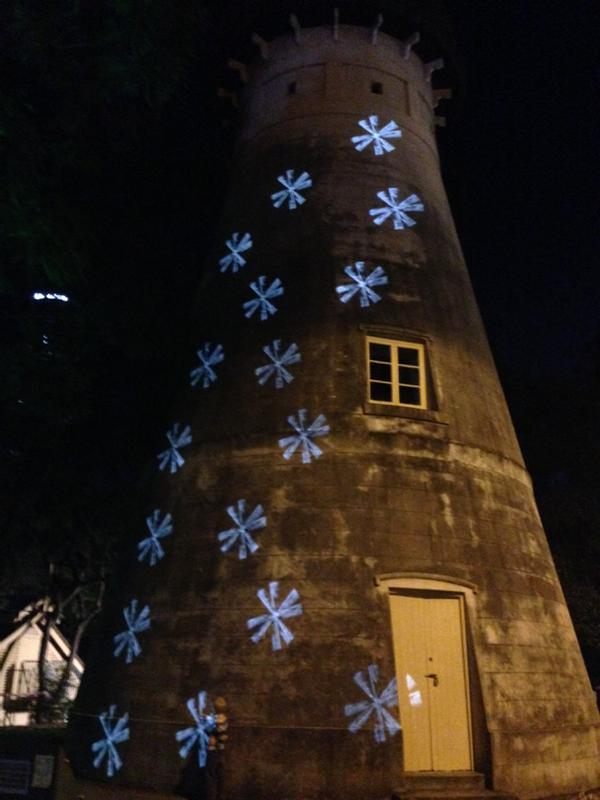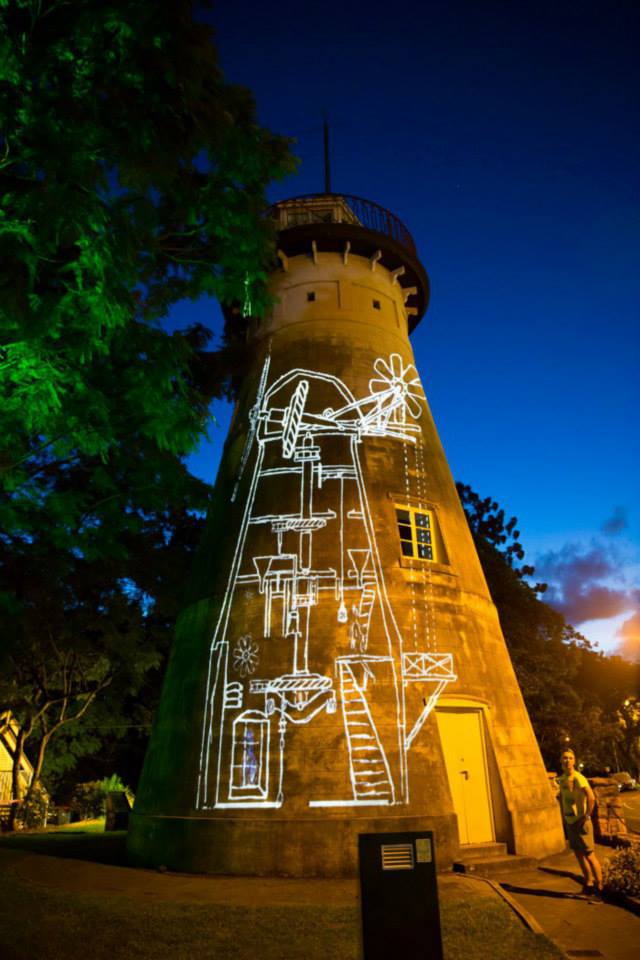
‘Wind blisters those who try to run’ is a live projection mapping artwork on The Old Windmill, created for UR{BNE} Festival – a festival where independent artists and events coordinators seek out unused and forgotten places within Brisbane city, and highlight these through art events. My projection ran on the 17th and 18th of April, 2015. This piece is also part of the United Nations global festival for The International Year of Light: (click here), as well as coinciding with the National Trust Heritage Festival. As far as we are aware (festival organisers, Brisbane Heritage trust, Engage Arts, and myself), this is the first time this building has ever been engaged in projection art or projection mapping. It is Australia’s oldest windmill, and Queensland’s oldest surviving European structure. It has an incredible history, including some very dark moments, some urban myths, and some interesting moments in the furthering of communications technology, time keeping, and weather technology. It was also used to make Queensland’s first television broadcast.
Wind blisters those who try to run consisted of two projections, one on each side of the curved and tapered Old Brisbane Windmill. The content was a montaged series of animations that were made to conform to the shape of concrete bricks like those that make up the Old Windmill. I took inspiration from the windmill’s checkered past as both a place of death and torture, and a place of technological innovation, to create imagery that looked towards a positive future for the structure. I also took inspiration from technical drawings of 18th and 19th century windmills and maps of the area, to create an animated and interactive ‘xray’ of the windmill (complete with ghosts), and other drawings that I created for use in generative and data driven scenes. One of my main goals with this artwork was to bring a very hand-drawn 2D effect into projection mapping. The bricks were purposefully wobbly and ‘sketched’. The music played throughout my performance on the first night was a selection of my own works. On the second night my music played until other performances began on the grass beside my artwork.
A series of different presets allowed me to have some scenes that conformed to separate bricks independently, some that covered a range of bricks simultaneously, and some that broke out of the formation completely, as if creatures were emerging from the windmill’s walls. I remained on site during the performance to manually change between scenes on both computers. This meant that I could experiment with several styles of projection mapping, rather than just one. This allowed me to choose artwork based on crowd interest and participation – more hectic imagery when a crowd was standing around, or more ambient imagery when viewers were sitting quietly on the grassy knoll where the windmill is viewed. Longer, sustained shots for when people were interested in watching for a long time, and shorter, sharper imagery when people were simply passing by. I also experimented with bringing poetry into this piece by projecting poetic lines. The poetry was set up as a movie file so that the words could easily change. I experimented with this on both projectors.
The main projector was a hired Barco, tipped onto its side. It easily projected white onto the Windmill’s dark surface, but struggled with colours. This was a shame, but on the day of the performance, I made a series of new scenes that mainly incorporated black and white elements. The second projector was my own, and sat on the other side of the windmill lighting up one of its iconic windows. As we weren’t allowed inside the building to create rear-projections out the windows, I focused on using the outline of the window. The projector’s quality on this side was less, but it was an nice way to include more of the building, and light up the side of the windmill that is usually forgotten and in shadow.
There were some challenges. The greatest challenge was that we could only hire one projector, and thus we had a smaller surface area to work with, rather than the entire windmill. One of the challenges that rose from this was creating content, and using appropriate mapping software, to conform to the curved, tapered bricks of the Old Brisbane Windmill. Another challenge was to create content that gave the illusion that the projector was reaching more of the windmill than it actually was, by strictly keeping away from any rectangular design that would confirm the projected screen’s edges. The final decision for what projector would be used and where it would be stationed on site was only confirmed a few days before the event, meaning another challenge was to create a range of content for all different projector height/width scenarios
The ambient light was the other major challenge. A bright street lamp resides directly beside the windmill, there are up-lights all around the windmill facing both it and the surrounding trees, and other festival lighting also dampened the projector light. However, the projection was still effective, and the light allowed for the audience to enjoy picnics on the grass in front of the windmill.
I received fantastic audience responses and feedback from this piece both on the nights that it ran, and afterwards. By email I received this comment from one viewer on Saturday’s performance, “It was brilliant last night. You illuminated the most iconic building in Queensland, perhaps apart from Government House or Parliament, but certainly the oldest of significance. That they let you do that is a testament to the high regard in which your work is held. And you did an especially marvellous job of it. I think your work critiqued the simplicities from which we all derive, and their fundamental value. It looked like you projected a cartoon onto the old windmill, but in fact you projected an X-ray of history which analysed deep Queensland bones and health. To my way of looking, you were reminding Queenslanders (and the world) of fundamentals they are losing. I will never forget the way you worked with light there”. And this comment from Friday’s performance, “Im not sure I have ever seen the old windmill look so beautiful”. Wind blisters those who try to run was produced with the help of Engage Arts and MicroHire.
